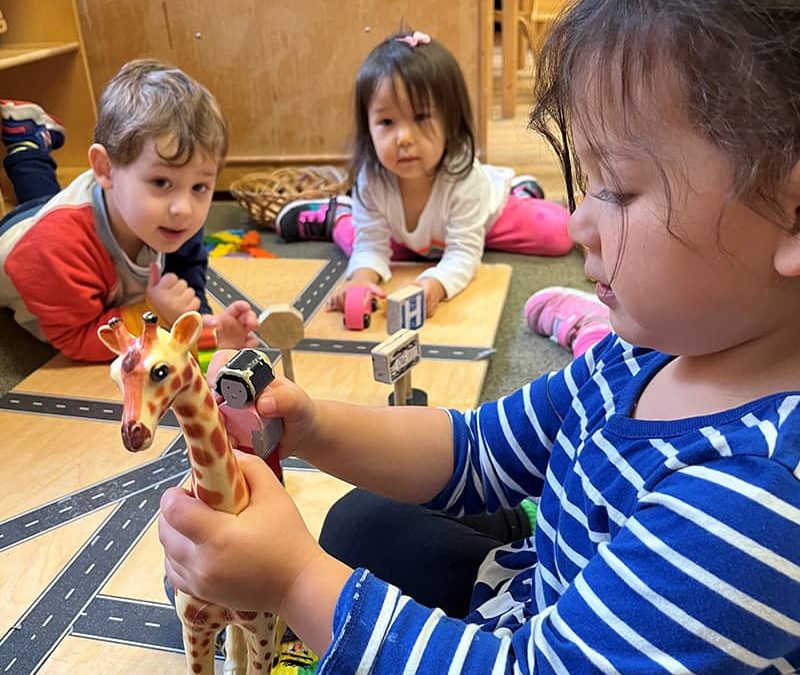According to the Center for Disease Control and Prevention, children and adolescents should do 60 minutes (1 hour) or more of physical activity each day. If this sounds like a tremendous amount, don’t worry — your child may already be meeting the Physical Activity Guidelines for Americans. And, if not, you’ll soon discover all the easy and enjoyable ways to help your child meet the recommendations. Encourage your child to participate in activities that are age-appropriate, enjoyable and offer variety! The three types of physical activity you should be aiming for include:
- Aerobic Activity
- Muscle Strengthening
- Bone Strengthening
Aerobic Activity:
Aerobic exercise gets your little one’s heart pumping and lungs working harder. Plus, there are mind and mood benefits as it tells the body to make more “feel-good” chemicals – endorphins. What counts as aerobic exercise? Here are some fun types to try:
- Scooter
- Skipping, jogging, or running
- Dancing to music
- Playing tag or Duck, Duck Goose
- Jumping rope
- Jumping jacks
Muscle Strengthening
Some physical activity is better-suited for preschool-age children as they do not usually need formal muscle-strengthening programs, such as lifting weights. Younger children usually strengthen their muscles when they do gymnastics, play on a jungle gym or climb trees.
If you’re heading outdoors, look for playgrounds that have monkey bars — swinging from one bar to the next strengthens the upper body, boosts muscular endurance and improves coordination. Closely supervise young children so you can catch them if they lose their grip.
A grassy park is the perfect place to practice wheelbarrows and young children often enjoy partnering activities. To perform the wheelbarrow, your child lowers himself to the floor in a pushup position. Another child stands behind him, grabs your child’s ankles and raises them to the height of his own waist. The “wheelbarrow” child walks on his hands as his partner steers him across the floor.
Another way to make muscle strengthening fun is to encourage children to try the mimicking animals or insects. One entertaining one is the inchworm. To practice the inchworm, your child lies on the ground mimics the movement of an inchworm alternating from an inverted “V” position to walking hands forward and having a body parallel to the floor and repeating the process until they’ve moved across the floor.
Indoors opportunities abound inside the home or at a structured venue like a gymnastics facility – especially during overly hot or rainy summer days.
While children typically like playing with basketballs, baseballs, footballs and soccer balls, to strengthen their muscles, introduce kids to the medicine ball. The squat toss effectively strengthens the legs, chest and arms. To practice this activity, your child stands with his feet about hip-width apart. Holding a medicine ball directly in front of his chest with both hands, he squats down until his thighs are parallel to the floor, then quickly jumps straight up while throwing the ball high in front of himself.
Bone Strengthening
Bone-strengthening exercise helps your bones grow and makes them less likely to break. Many muscle strengthening exercises contribute to healthy bone density and go hand-in-hand with one that encourage muscle flexibility. Additionally, improving a child’s flexibility helps them reach and bend and turn better, subsequently, avoiding getting hurt at any type of physical activity. Basic stretching exercises like toe touches or side stretches are a terrific and easy way to start your day with your little one and the following workouts are great for muscle strengthening and flexibility, too: yoga, martial arts, dance and gymnastics.
Variety is key to getting your children engaged in physical fitness so compliment their planned outdoor activities with structured indoor play and or camp program which includes both forms. Children learn by example so an active mom, dad and sibling can definitely set the right stage for a healthy lifestyle. Physical fitness needs to begin at a young age so make it a priority now so you won’t feel “behind-the-eight ball” later! The most important thing is to make exercise — and getting off the couch — fun for young kids!


 I am excited to introduce you to the many wonderful things about Columbus Pre-School that made me want to join as director 12 years ago.
I am excited to introduce you to the many wonderful things about Columbus Pre-School that made me want to join as director 12 years ago.